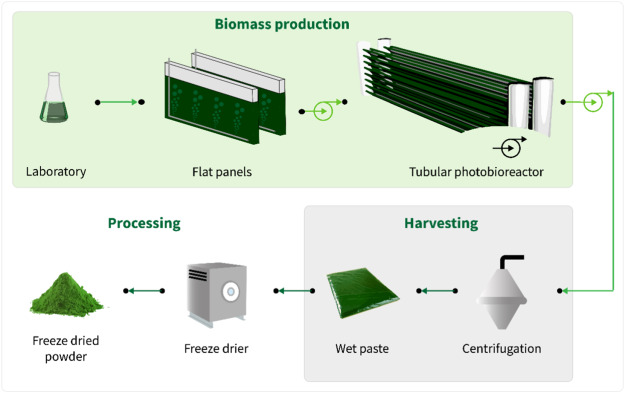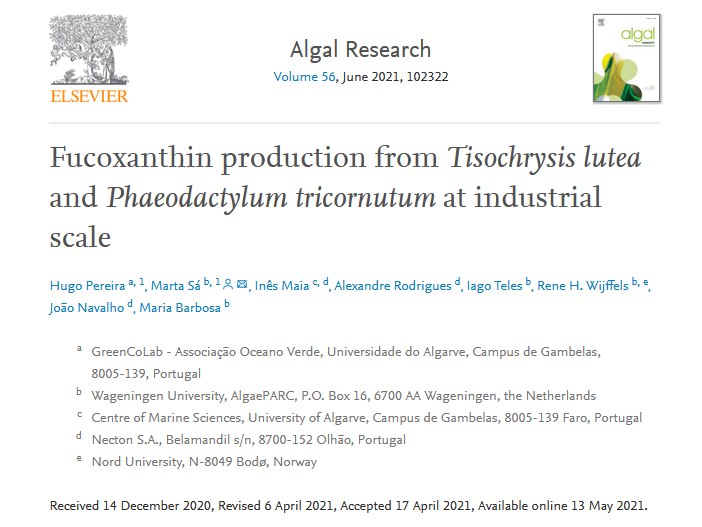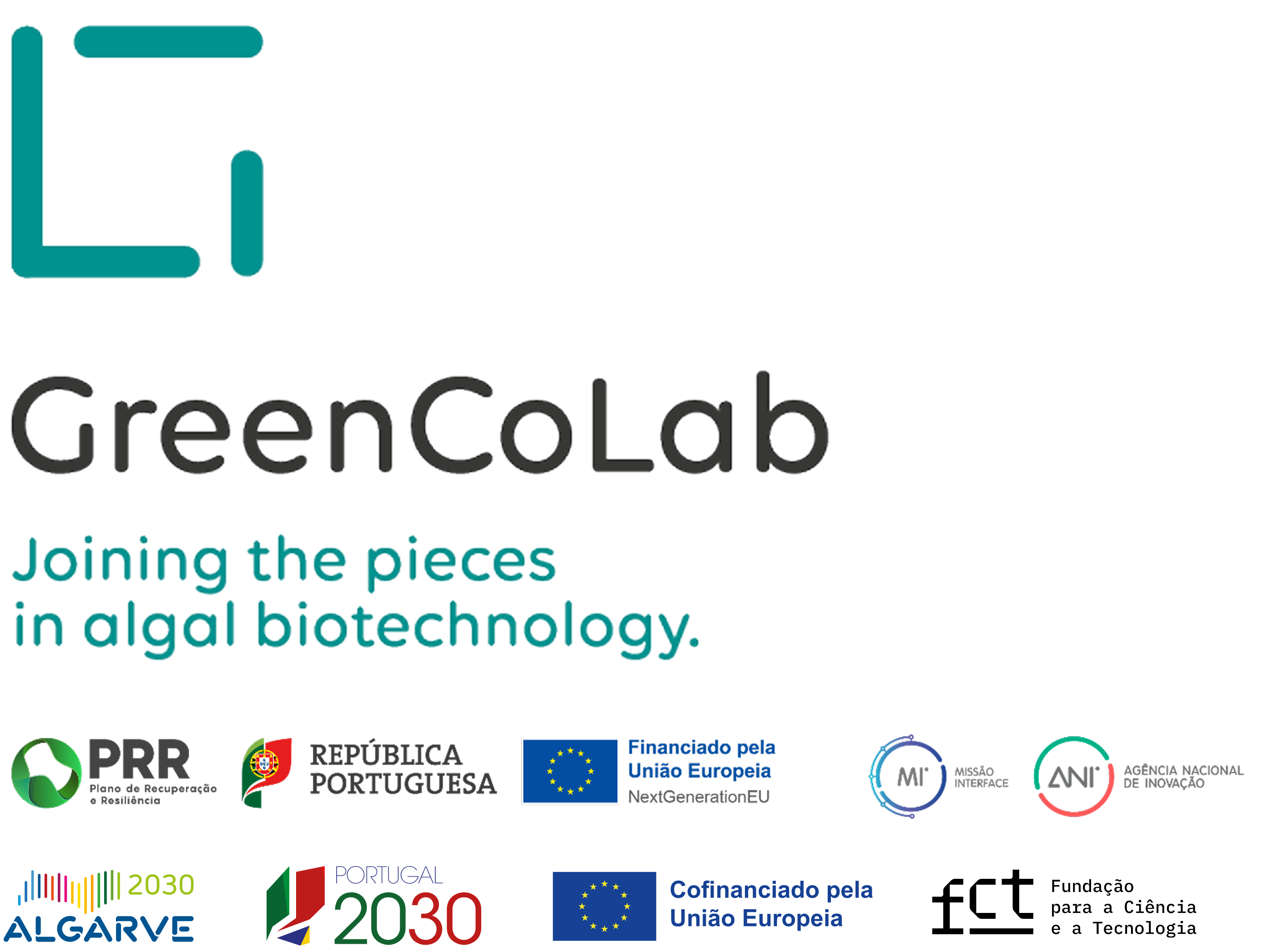

TITLE
Fucoxanthin production from Tisochrysis lutea and Phaeodactylum tricornutum at industrial scale
JOURNAL
Algal Research
AUTHORS
Hugo Pereira, Marta Sá, Inês Maia, Alexandre Rodrigues, Iago Teles, Rene H. Wijffels, João Navalho, Maria Barbosa
ABSTRACT
Fucoxanthin is a xanthophyll carotenoid with high market value. Currently, seaweeds are the primary source for fucoxanthin industrial production. However, marine microalgae reach 5 to 10 times higher concentrations (2.24 to 26.6 mg g−1 DW) and are considered a promising feedstock. In this work, two marine microalgae were produced at industrial scale to evaluate biomass and fucoxanthin production: Phaeodactylum tricornutum for autumn/winter and Tisochrysis lutea for spring/summer. Both strains were grown in 15 m3 tubular flow-through photobioreactors; for 170 consecutive days of semi-continuous cultivation regime. The average volumetric biomass productivities of P. tricornutum and T. lutea were 0.11 and 0.09 g DW L−1 day−1. P. tricornutum reached higher maximum biomass concentration (2.87 g DW L−1) than T. lutea (1.47 g DW L−1). P. tricornutum fucoxanthin content ranged between 0.2 and 0.7% DW, while T. lutea between 0.2 and 0.6% DW. The fucoxanthin content was correlated with the irradiation (MJ m−2) and biomass concentration in the photobioreactor (g L−1). This is the first work in literature reporting a long-term industrial production of T. lutea. Overall, we showed possible scenarios for fucoxanthin production from microalgae, increasing the window to supply the industry with steady production throughout the year.



